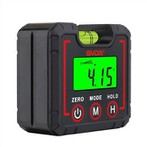How to determine the slope and emissivity of an infrared thermometer
How to determine slope
Effective methods for determining slope include using probes (such as RTD), thermocouples, or other suitable methods to measure the temperature of an object. After the actual temperature is obtained, adjust the emissivity setting until the temperature reading of the sensor head is equal to the actual measured temperature, which is the correct slope value.
How to determine emissivity
1. Measure the actual temperature of an object using probes (such as RTD), thermocouples, or other suitable methods. Adjust the emissivity value until the temperature reading of the sensing head is the same as the actual temperature, and the correct emissivity is obtained.
2. If a part of the surface of the object can be coated, the surface can be blackened with matte carbon black, with an emissivity of approximately 0.98. Set the emissivity to 0.98 and measure the temperature of the blackened part* Then measure the area adjacent to the blackened area on the object and adjust the emissivity until the temperature reading is equal to the actual temperature. At this point, the correct emissivity is obtained.
Optimize the measurement of surface temperature based on the following criteria:
1. Use measuring instruments to measure the emissivity of objects.
2. Try to avoid reflection as much as possible; Shield the object from high-temperature heat sources in the surrounding environment.
3. When the temperature of the object is high, if there are several overlapping wavelengths that can be used, choose a shorter wavelength.
4. For semi transparent materials such as glass; When measuring temperature, it should be ensured that the background temperature is uniform and lower than the temperature of the object.
5. When the emissivity is less than 0.9, the sensing head should be as perpendicular as possible to the surface of the target object. Do not let the angle between the axis of the sensing head and the normal of the object surface exceed 45 °






